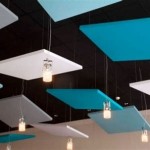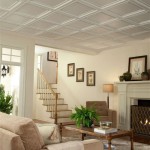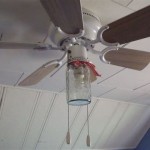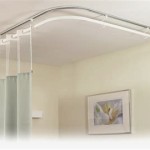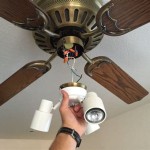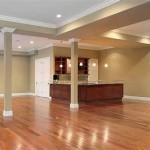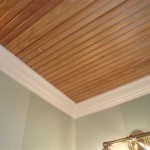The Multifaceted Benefits of Sheet Metal Ceilings and Walls
Sheet metal ceilings and walls are increasingly gaining recognition in contemporary construction and renovation projects. Beyond their aesthetic appeal, sheet metal offers a range of practical advantages that contribute to enhanced structural integrity, improved environmental performance, and long-term cost savings. This article explores the diverse benefits of incorporating sheet metal into ceiling and wall systems, highlighting its durability, versatility, and sustainability.
The use of sheet metal in ceilings and walls is not a new phenomenon. Historically, metal has been employed for its strength and resistance to fire. However, modern advancements in manufacturing processes and material coatings have significantly expanded its applications and enhanced its functionality. Today, sheet metal is available in a variety of materials, including steel, aluminum, copper, and zinc, each offering unique properties suitable for specific applications.
Durability and Longevity
One of the primary advantages of sheet metal ceilings and walls is their exceptional durability. Unlike traditional materials like drywall or plaster, sheet metal is highly resistant to impact, scratches, and other forms of physical damage. This inherent strength makes it an ideal choice for high-traffic areas, such as commercial buildings, schools, and hospitals, where walls and ceilings are subjected to constant wear and tear. Sheet metal's resistance to damage translates into lower maintenance costs and extended lifespan, providing long-term value to property owners.
Furthermore, sheet metal is inherently resistant to moisture, mold, and mildew growth. This is particularly crucial in environments prone to humidity or water damage, such as bathrooms, kitchens, and basements. The non-porous surface of sheet metal prevents the absorption of moisture, thereby inhibiting the growth of harmful microorganisms that can compromise indoor air quality and structural integrity. This resistance to moisture also simplifies cleaning and maintenance, as sheet metal surfaces can be easily wiped down without the risk of damage or deterioration.
The longevity of sheet metal ceilings and walls is further enhanced by the availability of various protective coatings. Galvanization, a process of applying a zinc coating to steel, provides exceptional resistance to corrosion and rust. Powder coating, another popular option, involves applying a durable polymer coating that protects the metal from scratches, UV radiation, and chemical exposure. These coatings significantly extend the lifespan of sheet metal, ensuring that it remains aesthetically pleasing and structurally sound for decades.
The fire-resistant properties of steel and other metals also contribute to the durability and safety of sheet metal ceilings and walls. In the event of a fire, sheet metal can act as a barrier, preventing the spread of flames and smoke, thereby providing valuable time for occupants to evacuate. This fire resistance is a critical advantage in commercial and residential buildings, as it can significantly reduce the risk of property damage and loss of life.
Versatility in Design and Application
Sheet metal offers unparalleled versatility in design and application, allowing architects and designers to create unique and visually stunning interiors. It can be easily formed into a variety of shapes and sizes, providing endless possibilities for customization. From flat panels to intricate patterns, sheet metal can be adapted to suit any architectural style or design aesthetic.
The availability of different metal types, such as steel, aluminum, copper, and zinc, further expands the design possibilities. Each metal has its own unique appearance and properties, allowing designers to choose the material that best complements the overall design scheme. For example, stainless steel offers a sleek and modern look, while copper provides a warm and traditional aesthetic. Aluminum is lightweight and corrosion-resistant, making it an ideal choice for exterior applications, while zinc offers a distinctive patina that develops over time.
Sheet metal can be easily integrated with other building materials, such as glass, wood, and concrete, creating visually interesting and dynamic spaces. It can be used to create accent walls, ceiling panels, or even entire wall and ceiling systems. The smooth, reflective surface of sheet metal can also enhance the lighting in a room, creating a brighter and more inviting atmosphere. The reflective qualities contribute to energy efficiency by reducing the need for artificial lighting; ambient light is dispersed more effectively, potentially lowering energy consumption.
The ease of installation is another significant advantage of sheet metal ceilings and walls. Modern sheet metal systems are designed for quick and efficient installation, reducing labor costs and project timelines. Many systems feature interlocking panels or modular components that can be easily assembled on-site. This ease of installation makes sheet metal an attractive option for both new construction and renovation projects. In renovation projects, the relatively low weight of materials like aluminum allows for installation without significant structural reinforcement, reducing costs further.
Sustainability and Environmental Benefits
Sheet metal is a highly sustainable building material, offering a range of environmental benefits. It is 100% recyclable, meaning that it can be reused indefinitely without losing its structural integrity. This recyclability reduces the demand for virgin materials and minimizes waste, contributing to a more sustainable construction industry. The use of recycled sheet metal in construction projects further reduces the environmental impact, conserving energy and resources.
The durability and longevity of sheet metal also contribute to its sustainability. By lasting for decades with minimal maintenance, sheet metal reduces the need for frequent replacements, thereby minimizing waste and conserving resources. This long lifespan also reduces the embodied energy of the building, which is the total energy required to produce, transport, and install the building materials. Choosing durable materials like sheet metal can significantly reduce the overall environmental footprint of a building.
Sheet metal can also contribute to improved energy efficiency in buildings. Certain types of sheet metal, such as reflective aluminum, can help to reduce solar heat gain, thereby lowering cooling costs in hot climates. This reflectivity helps to keep the interior of the building cooler, reducing the need for air conditioning. In colder climates, sheet metal can be used to create thermal barriers, helping to insulate the building and reduce heating costs. The thermal mass of some metals, such as steel, can also help to regulate temperature fluctuations, further enhancing energy efficiency. In some instances, pre-painted sheet metal can offer enhanced reflectivity compared to field-applied paints, resulting in greater energy savings.
The manufacturing of sheet metal has also become increasingly sustainable. Modern manufacturing processes utilize energy-efficient technologies and minimize waste. Many sheet metal manufacturers are committed to reducing their environmental impact and have implemented sustainable practices throughout their operations. This includes using recycled materials, reducing water consumption, and minimizing air emissions.
Furthermore, the reduced need for chemical treatments and coatings compared to other materials like wood contributes to the environmental friendliness of sheet metal. While some coatings are applied for protection or aesthetics, they are often less environmentally damaging than the preservatives and sealants required for wood products to achieve similar levels of durability and weather resistance.
In summary, sheet metal ceilings and walls offer a compelling combination of durability, versatility, and sustainability. Their resistance to damage, moisture, and fire makes them an ideal choice for a wide range of applications. Their design flexibility allows for endless customization, while their recyclability and energy-efficient properties contribute to a more sustainable built environment. As the demand for sustainable and durable building materials continues to grow, sheet metal is poised to play an increasingly important role in the future of construction.
The aesthetic adaptability of sheet metal also extends to surface finishes. Beyond painting and powder coating, options such as brushing, polishing, and chemical etching can create unique textures and visual effects. These finishes can be tailored to match specific design requirements and enhance the overall appearance of the space. The ability to customize the surface finish allows for seamless integration with other design elements and contributes to a cohesive and visually appealing interior.
The use of sheet metal also allows for easier integration of building systems. Lighting fixtures, HVAC vents, and other essential components can be seamlessly integrated into sheet metal ceilings and walls, creating a clean and uncluttered look. This integration simplifies installation and maintenance, and can also improve the overall performance of the building systems.
Finally, the long-term cost savings associated with sheet metal ceilings and walls are significant. While the initial investment may be higher than that of traditional materials, the reduced maintenance costs, extended lifespan, and improved energy efficiency can result in substantial savings over the life of the building. This makes sheet metal a cost-effective choice for property owners who are looking for a durable, sustainable, and aesthetically pleasing building material.

The Bold Look And Low Cost Of Metal Ceilings Walls

The Bold Look And Low Cost Of Metal Ceilings Walls

Corrugated Metal Ceiling Ideas 5 Ways To Enhance Your Home

The Bold Look And Low Cost Of Metal Ceilings Walls

Corrugated Metal Ceiling Ideas 5 Ways To Enhance Your Home

Corrugated Metal Ceiling Basement Ideas Decorative Tiles Inc

Corrugated Metal Ceiling Basement Ideas Decorative Tiles Inc
6 Creative Ways To Use Corrugated Metal Panels

10 Creative Ways To Use Corrugated Metal Boards Best Ideas

Metal Building Interior Options Walls Framing
Related Posts

